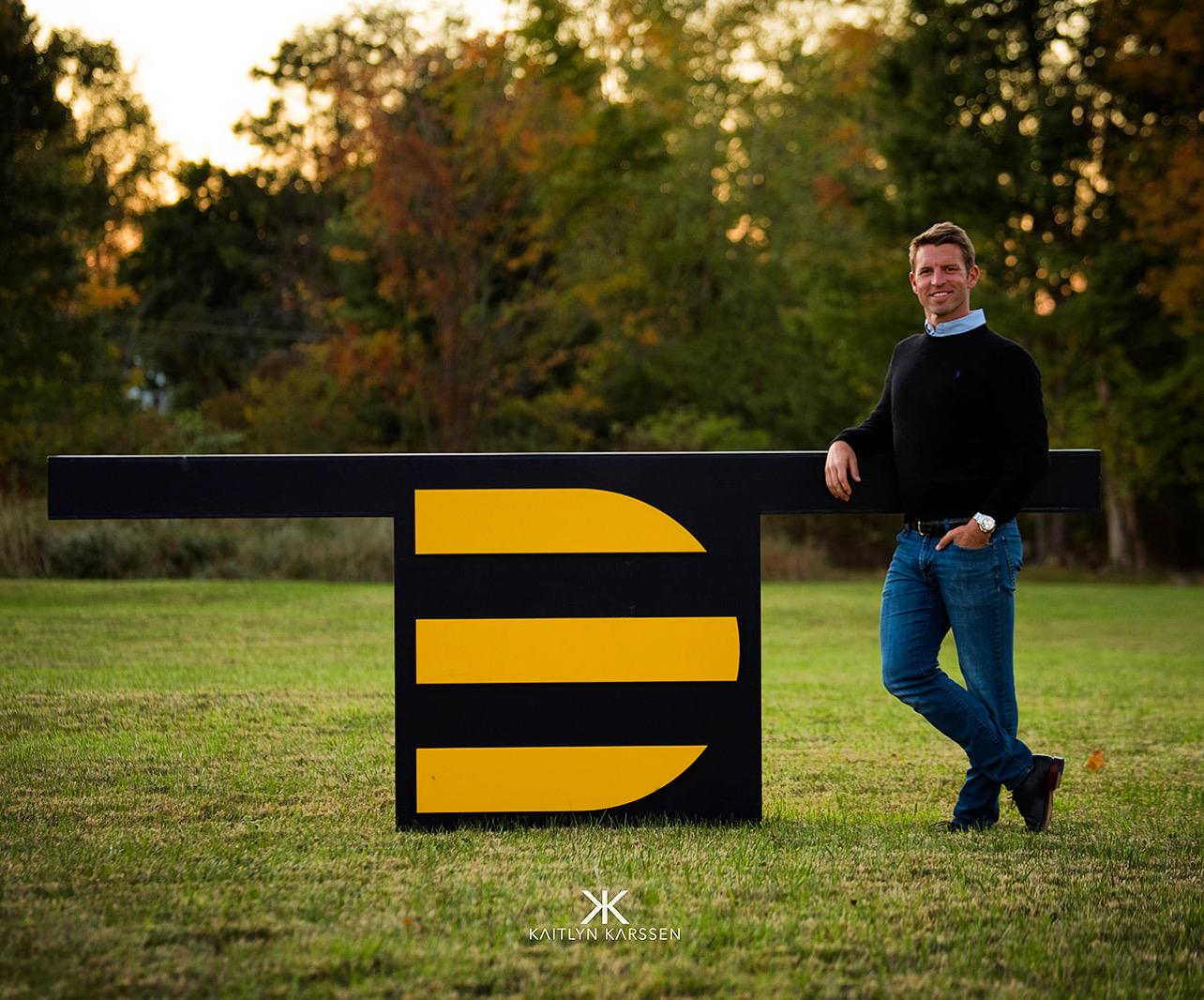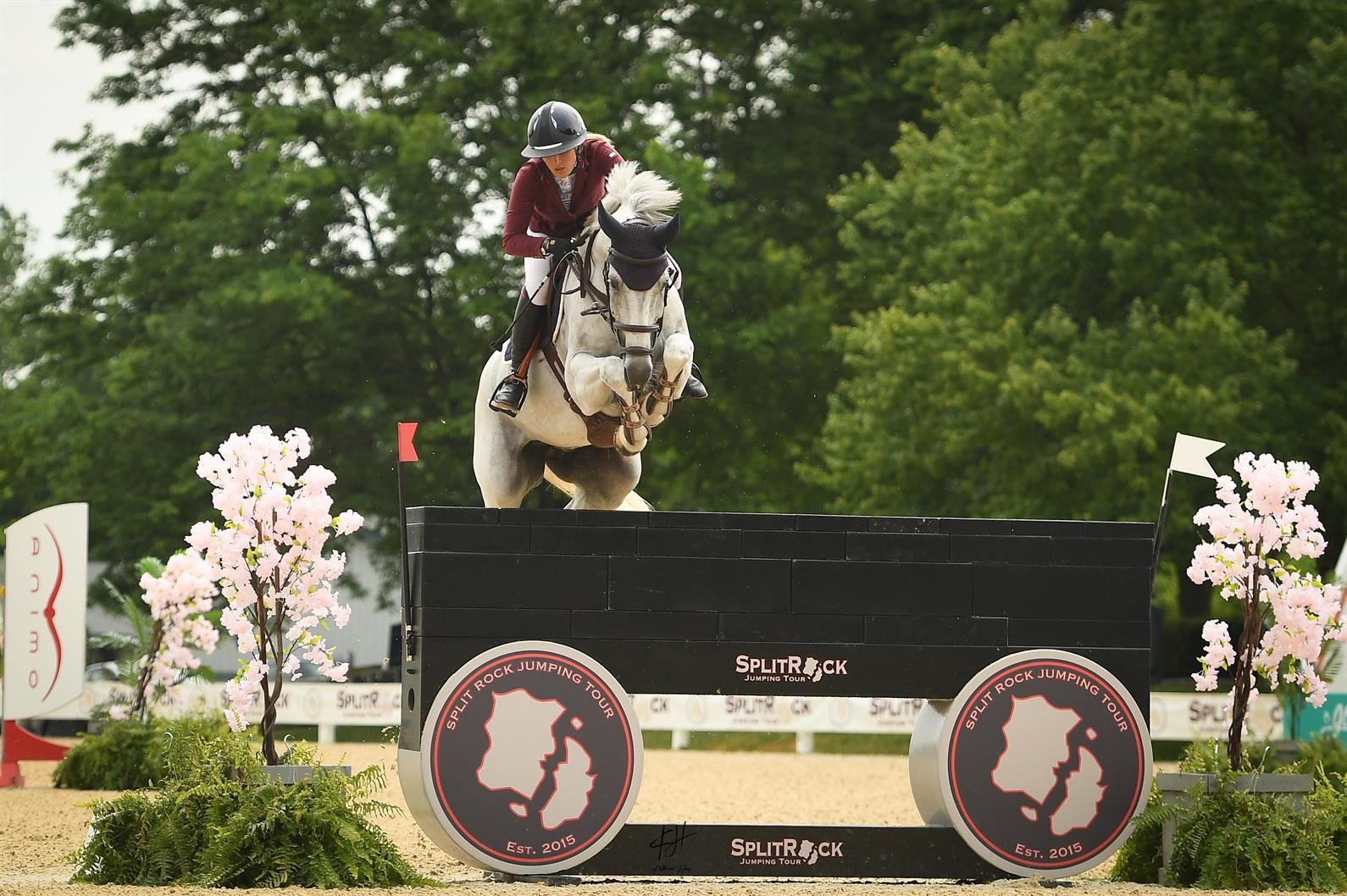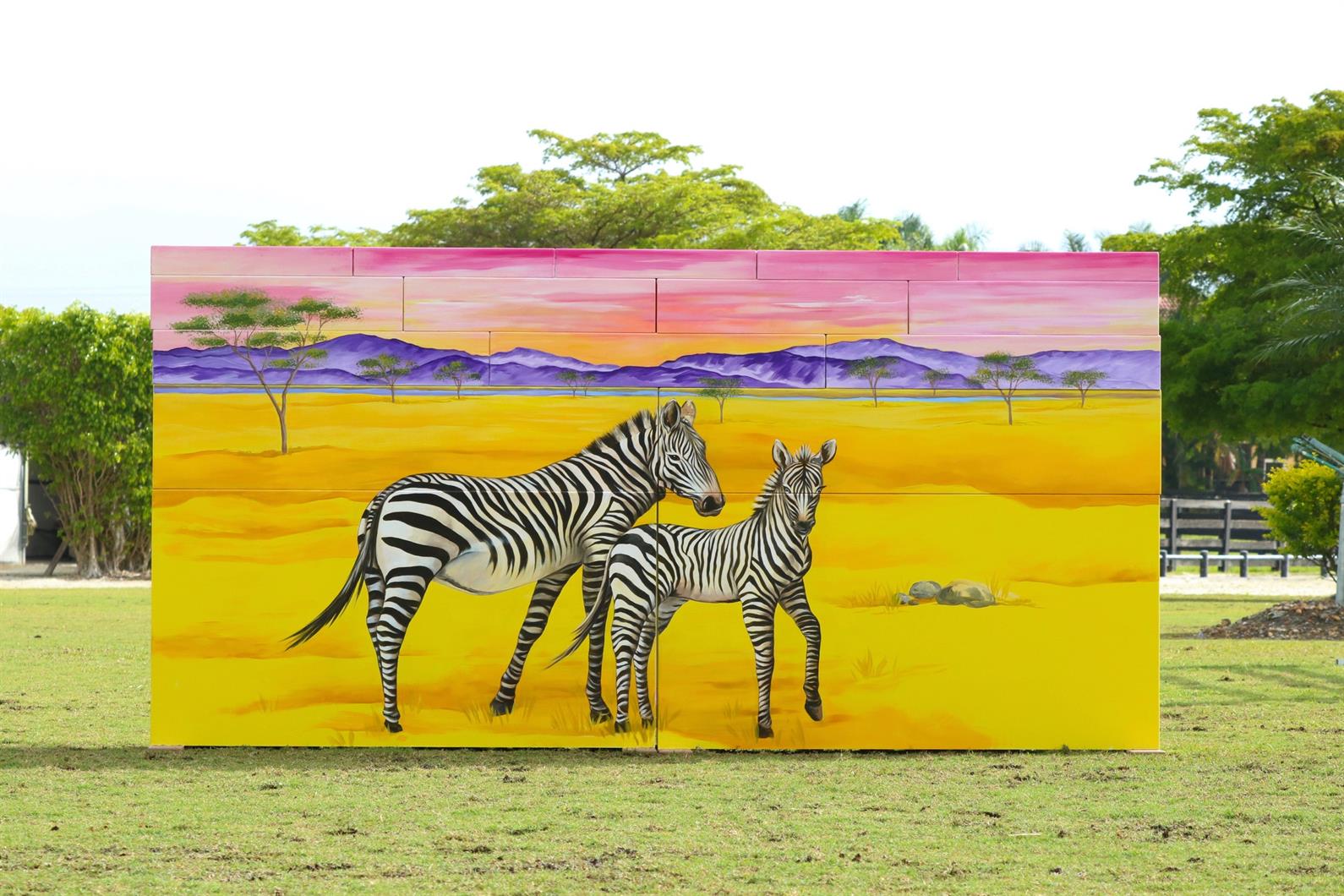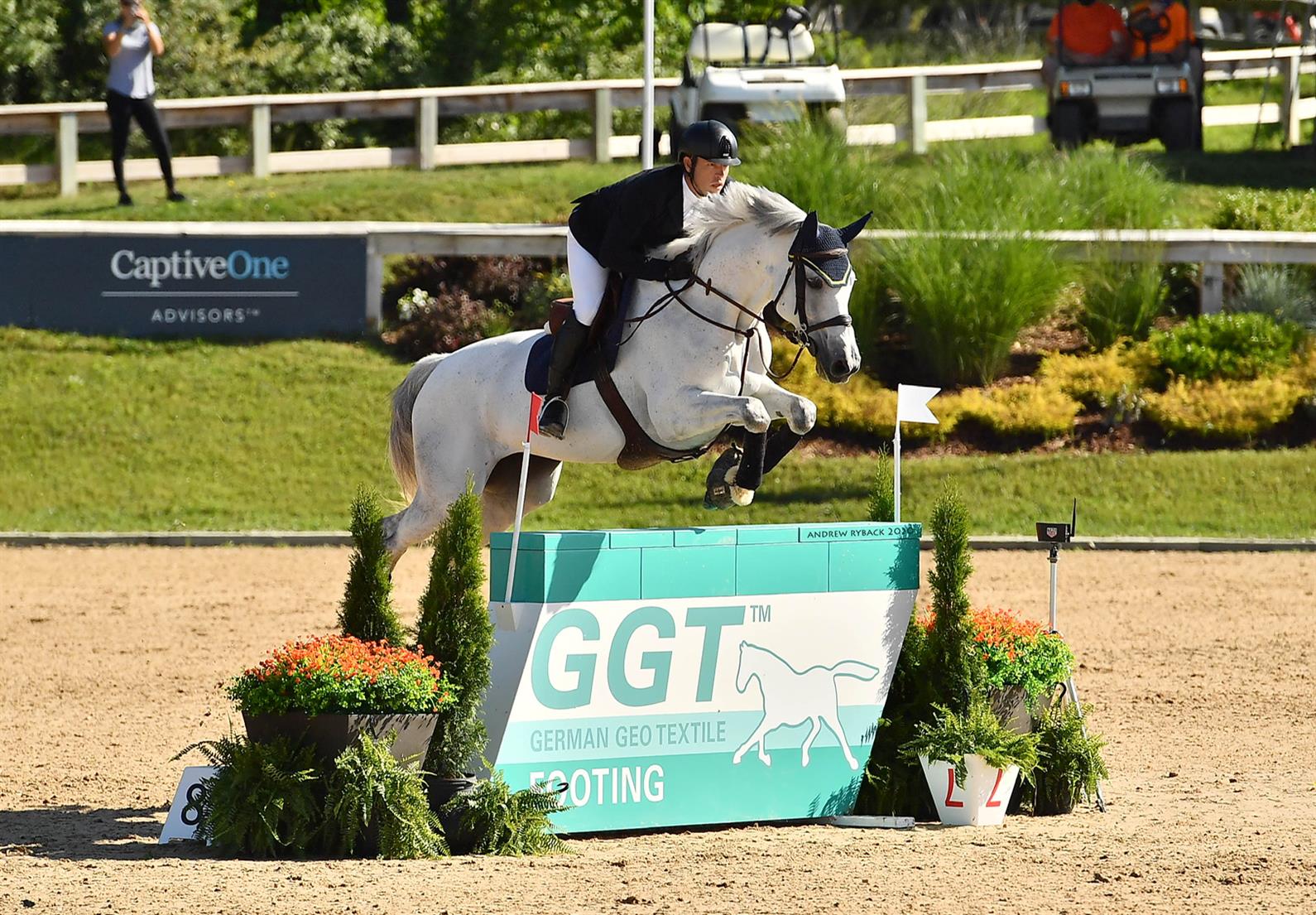
Photo: Kaitlyn Karsson
Javan Dalman doesn’t just leap the obstacles in the jumper ring; he builds them, too. Dalman, a competitor in the low amateur jumpers, also is the founder of Dalman Jump Co., whose eye-catching designs can be found in show rings and equestrian facilities around the country.
We caught up with him to find out more about caring for jumps so they last longer, new design and safety trends, and the process behind the company’s creative jump and standard designs.
How did you get into jump design and construction?
I started out building custom homes. I married a trainer and grand prix rider, Sandra Dalman, and I started making jumps for her to use on the farm, jumps that were strong and lightweight but still tall enough that she could use them to get ready to show. Then people started ordering the jumps that I made, so it became a business.
What are some of the changes you’ve seen in jump design since the heyday of the painted wooden poles?
Back in the day, jumps were built with heavy, wooden octagon rails that were held up with pins and deep cups; you could knock them and the rails wouldn’t come out. That’s not the case anymore. Today, rails are more lightweight, and the jump cups are exceptionally shallow. That means the poles come out of the cups very easily. Some people like to have that style of cup at home so you can experience in practice how light of a rub will end up being a fault. The sport today has become much more technical, favoring fast and careful horses, and the jumps reflect that.
We also make a lot of breakaway cups for safety. I think the back rails of oxers should always have breakaway cups, not only at shows, but also at home. A breakaway cup has a threshold of a certain amount of weight that will trigger it to give way. When it feels about 10 pounds of pressure, it releases and drops to the ground. So if your horse gets caught on the back rail of an oxer, the whole apparatus will come down and break away, reducing the risk of a rotational fall.
Recently, foam poles have become popular schooling tools. They’re made out of liverpool material stuffed with foam; they are great to use with grid work and as landing rails for enhanced safety so the horses don’t roll an ankle or trip. These foam poles are a new trend, and they’re a new feature in jumps.
What other trends in jump design, materials, and safety should people be aware of?
We trend away from the old painted wood to powder-coated aluminum, because it requires less maintenance, it’s more durable, and it’s lightweight. Being lightweight is important, especially at home. Moving our aluminum standards around an arena is only a one-person job, even for a petite-built trainer trying to move two or three standards at a time to set a course while her students are jumping in a lesson or while she’s trying to ride three or four horses herself! That’s where our roots are from, so we like to help people get jumps they can move around and don’t have to repaint every year.

Photo: Katherine Hay
You can stack four standards horizontally, pick them up, and walk them across your ring with ease. They stack and store nicely and neatly in the barn.
We also take a lot of pride in our lifetime construction warranties. Our aluminum standards are powder-coated, so the color goes on in an oven at 400 degrees and it becomes part of the aluminum, so it never comes back off. Aluminum doesn’t rust. So you have no rust and no rot. A set of aluminum standards can literally last a lifetime.
Schooling at home with spooky jumps to prepare for what your horse will see at a horse show has become critically important. As far as what horses see, there are a lot of interesting fillers, and the most interesting filler to a horse is another living creature. We have dachshunds, mini ponies, zebras—these types of images seem to get horses’ attention the most. If you can keep your horse on the aids and get over a fence like that successfully when you’re at home, you’ve practiced what you’re going to experience when you go to a show.
The whole point comes back to being one with your horse and having your horse listening to you. If that’s going on, you’re going to get to the other side of the jump. But duplicating that show-ring experience at home is the key.
What is the basic process for getting a jump from concept to show ring?
A jump will start as an idea. I’ll draw it out with a pencil, and then it goes into a CAD [computer-aided design], and then it will go into a robotic machine that will cut out the shape. That’s what gives us our fabulous wings and consistent shapes that we can replicate over and over again.

Photo: Courtesy of Dalman Jump Co.
A lot of times people want themes for their show. In Palm Beach, they said, ‘Bring us Palm Beach themes.’ So, I designed jumps that featured polo mallets and the Worth Avenue clock tower. At Traverse City, I built them a sailboat, and I built them wine barrels, because there’s wine country there. A lot of times, the themes will be indicative of the area where the horse show is taking place. I also design a lot of jumps that showcase a farm’s logo or a company mascot, something that they love.
I got a call recently from a girl who wanted her horse embodied as the wings of the standards. We took a high-resolution image by Kaitlyn Karssen and imposed that to be seven feet tall and three feet wide. I think a horse is definitely going to look at that.
Often, the idea starts with what’s near and dear to a person, and then our job is to make it functional. We engineer it so it’s safe and it’s the proper size, specification, proportion and width.
What things do you consider in making a great design functional, safe, and understandable to a horse?
There are obvious things you want to avoid, like sharp points and anything like that that a horse could get hurt on. You also want to avoid extreme starting height; you want to make sure the starting height of the obstacle is a maximum of 3’ or 3’6”.
Proportion is another thing that we always have to take into consideration. A lot of the ideas we get are cool, but the proportion of them only allows the jump to be taller than it is wide. In those cases, we have to really think about what we’re going to do to make it so a horse can jump it, realistically.
You want to make sure that the feet of the standards are also nice and wide, so the jump doesn’t blow over in the wind; all of our jumps are made to be nice and sturdy.
The width, or the depth, is also important; you want to make sure the jump is not too deep. I don’t think you want to have the fence be more than about 12” deep. A good wall is about 10” deep. The stackability of a wall is also very important, the fact that the blocks give way and are very easily moved off the wall. That’s for two reasons: in the show ring, the course designer is going to make sure those blocks slide off easily, because it’s both safer and because the obstacle comes down easier.
I always start my walls at 0.90 meters, then 20 centimeters, 10 centimeters, 10 centimeters, five centimeters, and five centimeters. That gives a lot of versatility for all the different ages and heights and jump groups. It also provides more versatility for the course designers, who always want to make sure there are two rows of stackable blocks—not just one—on the top of every wall, so there’s a safety barrier there.
What maintenance tips do you have to help jumps last longer?
If you’re not going to use a jump for a month, put it in the barn and store it. The sun and the rain are a jump’s biggest enemies. At Dalman Jump Co., we use a

Photo: Andrew Ryback Photography
super-high-grade UV clear coat that protects the poles and everything wooden from the sun as well as the rain. That UV clear coat is critical, and that’s a trend we’ve set.
For people at home repainting rails, the longevity of that pole is all in the prep work. Sand it down well and get all the old paint off. I take a piece of sandpaper in each hand like Karate Kid, cup my hand, put the pole between my index finger and my thumb, and sand down the entire pole. Then I put on a coat of good latex primer and sand it again. Then I apply at least two coats of paint and a clear coat after that.
It’s important to put really thin coats on, too. Don’t put a thick coat on thinking you’re going to cover it better, because it won’t dry and cure and harden, and it will come right back off. Thin coats take about 30 minutes to dry. Humidity plays a role and whether you have a fan also plays a role.
We also cap the ends of our poles in plastic. It’s about a 3.5” diameter cap, and that keeps the poles from touching one another when you stack them. It also keeps the end of the pole from getting chewed up.
With a Dalman Jump Co. product, you can get three to five seasons out of the initial product before you might consider repainting. I have five- and six-year-old poles out in the field that have never been repainted, but I also have clients in Wellington who have me repaint their poles every year because they get water spots from the hard water from the sprinkling system. It’s really in the eye of the beholder.
Maintenance is putting your jumps away when you’re not using them; storing them in a dry place; and keeping them up and off the ground. We actually make a pole holder that’s like a little canoe that goes under your ground lines to keep them off the sand. We also recommend pressure-washing the aluminum once a year to get any film off of them.
And I’m only a phone call away!


